Imagine standing before a temple that seems to float on a sacred lake, its golden dome catching the first rays of dawn, and intricate silver doors whispering tales of devotion. That’s the Durgiana Temple in Amritsar, a place where spirituality meets artistry, making it a haven for photographers. Whether you’re a seasoned shutterbug or just snapping pics with your phone, the temple’s beauty will leave you spellbound. In this guide, I’ll take you through why Durgiana Temple photos are so captivating, the best spots to shoot, and tips to make your images pop. Ready to dive into this visual feast? Let’s go!
Why Durgiana Temple is a Photographer’s Paradise
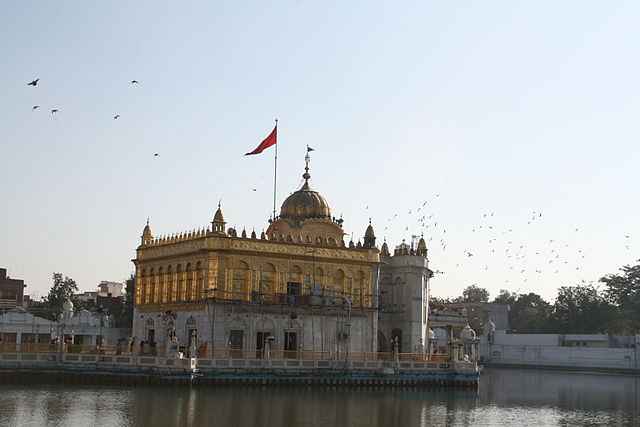
Ever wonder what makes a place scream “photograph me”? For Durgiana Temple, it’s the perfect blend of history, spirituality, and jaw-dropping aesthetics. Nestled in the heart of Amritsar, this Hindu temple, dedicated to Goddess Durga, isn’t just a place of worship—it’s a canvas of colors, textures, and emotions. Its architecture, serene surroundings, and vibrant festivals create a photographer’s playground. Let’s break down what makes it so special.
A Blend of Sikh and Hindu Architecture
The Durgiana Temple’s design is like a love letter to both Hindu and Sikh traditions. Built in 1921, it mirrors the iconic Golden Temple with its central dome and marble bridge leading to the main shrine. The gilded dome and canopies scream opulence, while the marble pathways add a touch of elegance. Photographing this fusion feels like capturing a piece of history where two cultures harmonize. The symmetry of the structure makes it easy to frame stunning shots, whether you’re shooting wide or zooming in on details. Want to capture the essence of Amritsar’s cultural blend? This is your spot.
The Serene Sarovar and Its Reflections
The temple sits in the middle of a sacred lake, or Sarovar, which is pure magic for photographers. The water acts like a mirror, reflecting the temple’s dome and surrounding statues of deities like Lord Shiva and Krishna. On a calm day, these reflections are so crisp, it’s like the temple is posing for you. The Sarovar’s edges, dotted with colorful fish and marble statues, add depth to your photos, making them feel alive. Trust me, you’ll want to spend hours here, chasing the perfect reflection shot. Can you imagine a more serene backdrop?
The Best Spots for Durgiana Temple Photography
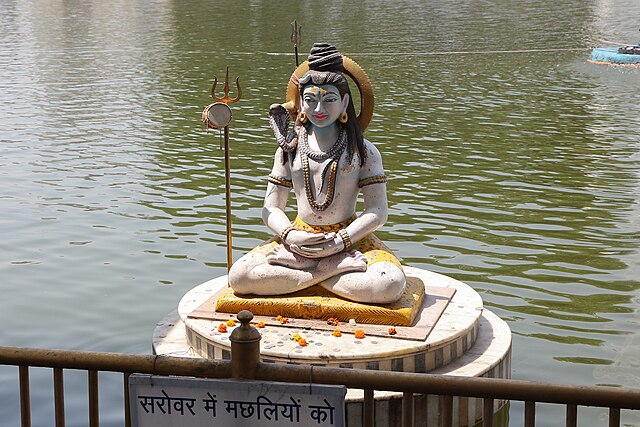
Not all spots in the temple are created equal when it comes to photography. Some areas practically beg to be captured, offering unique angles and details. Here are my top picks for where to point your lens.
The Silver Doors of the Deori
The temple’s entrance, known as the Deori, is guarded by massive silver doors that are a photographer’s dream. Carved with images of Goddess Durga and Lord Ganesha, these doors are a masterpiece of craftsmanship. The way light bounces off the silver creates a soft glow, perfect for close-up shots. Try shooting from a low angle to emphasize their grandeur or capture them during the evening when they’re softly lit. These doors aren’t just an entrance—they’re a story etched in metal. Who wouldn’t want to frame that?
The Gilded Dome at Sunset
If there’s one shot you can’t miss, it’s the temple’s gilded dome at sunset. As the sky turns shades of orange and pink, the dome glows like it’s been kissed by the sun. The contrast between the golden dome and the colorful sky is pure poetry. Position yourself near the Sarovar’s edge to include the reflection in your frame. This is the kind of photo that’ll have your friends asking, “Where is this place?!” Ready to chase that golden glow?
The Bada Hanuman Temple During Festivals
Within the temple complex lies the Bada Hanuman Temple, a hotspot during festivals like Navratri. The Langur Mela, where kids dress as langurs (monkeys) in vibrant costumes, is a riot of color and energy. Capturing these moments feels like freezing joy in time. The temple’s courtyard, with its ancient banyan tree, adds a rustic backdrop to these lively scenes. If you’re after action shots, this is your spot. Can you picture the chaos and color of a festival in your lens?
Tips for Taking Perfect Durgiana Temple Photos
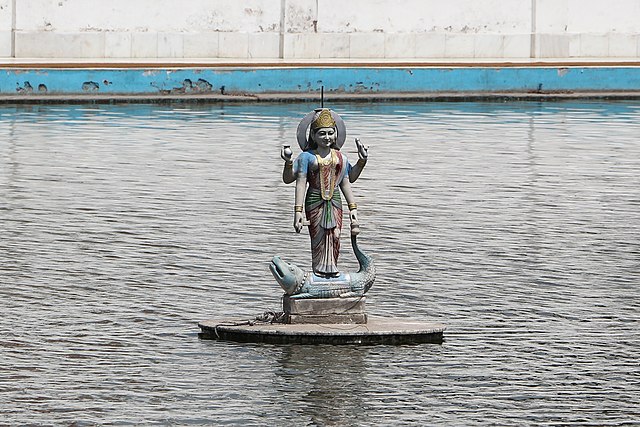
Snapping great photos isn’t just about pointing and shooting—it’s about timing, technique, and a bit of creativity. Here’s how to make your Durgiana Temple photos stand out.
Best Time of Day for Photography
Timing is everything. Early morning, just after the temple opens at 5 a.m., is ideal for soft, diffused light and fewer crowds. The morning mist over the Sarovar adds a mystical vibe to your shots. If you prefer dramatic lighting, visit during golden hour (an hour before sunset). Avoid midday when harsh sunlight can wash out colors. Planning your visit around these times will give your photos that extra wow factor. When’s the last time you caught a sunrise shot that took your breath away?
Camera Settings for Temple Photography
Not a tech wizard? No worries. For general temple shots, use a wide aperture (f/2.8 to f/5.6) to blur the background and make the temple pop. For detailed shots of the silver doors or statues, switch to a higher f-stop (f/8 or above) for sharpness. Keep your ISO low (100-200) in daylight to avoid graininess. If you’re shooting during aarti or festivals, bump up the ISO to capture motion without blur. Experiment with shutter speed for dynamic shots, like kids dancing during the Langur Mela. Ready to tweak those settings?
Capturing Reflections in the Sarovar
To nail those mirror-like reflections, use a polarizing filter to reduce glare on the water. Shoot from a low angle, close to the Sarovar’s edge, to maximize the reflection. A tripod helps keep your camera steady, especially in low light. Try framing the temple’s dome with the reflection centered for a symmetrical masterpiece. It’s like capturing two temples in one shot! Have you ever tried reflection photography before?
Shooting During Festivals
Festivals are chaotic, but that’s what makes them fun to photograph. Use a fast shutter speed (1/250 or faster) to freeze motion, like kids in langur costumes or devotees lighting diyas. A zoom lens (24-70mm) gives you flexibility to capture both wide scenes and close-ups. Stay patient and keep your camera ready—candid moments happen fast. You’ll come away with photos bursting with life. Can you feel the festival energy already?
The Spiritual Essence in Durgiana Temple Photos
Photos aren’t just about what you see—they’re about what you feel. The Durgiana Temple’s spiritual vibe is palpable, and your photos can capture that magic.
Devotees in Prayer
There’s something deeply moving about photographing devotees lost in prayer. Their expressions, whether serene or intense, tell a story of faith. Use a telephoto lens to capture these moments discreetly, respecting their privacy. A shot of an elderly woman offering flowers or a child lighting a lamp can evoke powerful emotions. These candid photos are the heart of the temple’s story. Ever captured a moment that felt sacred?
The Aarti Ceremony
The morning and evening aarti ceremonies are a sensory overload—chanting, bells, and the glow of oil lamps. Photographing the aarti is like capturing a sacred dance. Position yourself near the main shrine to catch the priests’ movements and the flickering flames. Use a slightly slower shutter speed (1/60) to create a soft glow effect. These photos will make viewers feel like they’re part of the ritual. Can you hear the bells ringing in your mind?
Festivals That Light Up Durgiana Temple Photos
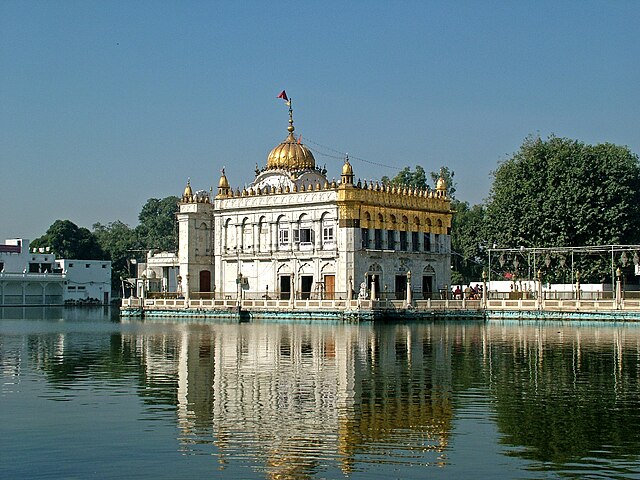
If you want your photos to scream celebration, visit during one of the temple’s major festivals. The energy, colors, and lights are a photographer’s jackpot.
Navratri at Durgiana Temple is a spectacle, especially at the Bada Hanuman Temple during the Langur Mela. Kids dressed as langurs in red and silver outfits parade through the complex, their faces painted with Multani mitti. The vibrant costumes against the temple’s marble backdrop create striking images. Shoot in burst mode to capture their playful antics. This festival is a goldmine for colorful, joyful photos. Ready to snap some festival magic?
Diwali and Dussehra Celebrations
Diwali and Dussehra turn the temple into a glowing wonderland. The dome is lit with colorful lights, and devotees light earthen lamps around the Sarovar. Fireworks during Dussehra add drama to your shots. Use a tripod for long-exposure shots to capture the lights’ brilliance. These photos will radiate warmth and festivity, making viewers want to join the celebration. Can you picture the temple aglow with diyas?
Practical Tips for Visiting Durgiana Temple
Before you grab your camera and go, here are some practical tips to ensure a smooth visit.
Getting to the Temple
Located near Hathi Gate in Amritsar, the temple is super accessible. It’s just 700 meters from Amritsar Railway Station and 1.5 kilometers from the bus stand. If you’re flying in, Sri Guru Ram Dass Jee International Airport is 11 kilometers away. Auto-rickshaws or cabs are the easiest way to get there. The temple’s central location makes it a breeze to include in your Amritsar itinerary. Planning a trip yet?
Temple Etiquette for Photographers
Respect is key when photographing a sacred space. Remove your shoes before entering and cover your head with a scarf (available at the entrance). Avoid taking photos inside the inner sanctum, where devotees are praying. Dress modestly—cover your shoulders and knees. Always ask permission before photographing individuals, especially during rituals. Following these guidelines ensures you’re capturing memories respectfully. Ready to be a mindful photographer?
Editing Durgiana Temple Photos for Impact
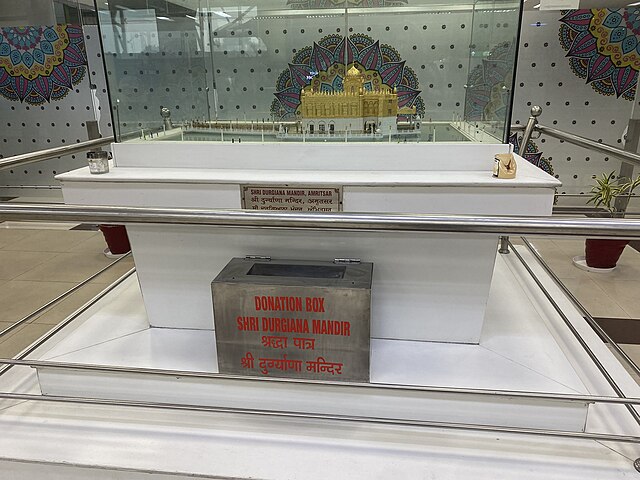
Your photos are like raw dough—editing shapes them into something irresistible. Here’s how to make your Durgiana Temple photos shine.
Enhancing Colors and Contrast
The temple’s vibrant colors deserve to pop. Use editing software like Lightroom or Snapseed to boost saturation and contrast. Enhance the gold of the dome and the silver of the doors without overdoing it. Adjust shadows to bring out details in darker areas, like the Sarovar’s edges. A touch of vibrance will make your photos look like they’re glowing. Ever edited a photo to make it come alive?
Creating a Photo Story
Turn your photos into a narrative by curating a series. Start with a wide shot of the temple, followed by details like the silver doors or a devotee’s hands lighting a lamp. Include festival shots for energy and end with a serene Sarovar reflection. Share this story on social media or a blog to transport viewers to the temple. It’s like inviting them on your journey. Ready to tell a story with your photos?
Conclusion
Durgiana Temple isn’t just a place—it’s an experience that begs to be photographed. From its shimmering dome to the lively Langur Mela, every corner offers a frame-worthy moment. Whether you’re capturing the spiritual calm of the Sarovar or the festive chaos of Navratri, your photos will tell a story of faith, beauty, and culture. So, grab your camera, visit this Amritsar gem, and let your lens weave magic. Have you planned your trip yet? The temple’s waiting to steal your heart—and your memory card!
FAQs
- Can I take photos inside the Durgiana Temple?
Yes, photography is allowed in most areas, but avoid shooting inside the inner sanctum where devotees pray. Always respect temple etiquette and ask permission when photographing people. - What’s the best time to visit for photography?
Early morning (around 5 a.m.) or golden hour (an hour before sunset) offers the best lighting and fewer crowds, perfect for capturing stunning temple photos. - Do I need a professional camera to photograph the temple?
Nope! A smartphone with a good camera can work wonders, especially for social media shots. For more control, a DSLR or mirrorless camera with a versatile lens is great. - Are there any festivals ideal for photography at Durgiana Temple?
Absolutely! Navratri’s Langur Mela and Diwali’s light displays are fantastic for vibrant, colorful photos. Dussehra’s fireworks also add drama to your shots. - How can I respect the temple’s sanctity while photographing?
Dress modestly, remove your shoes, and cover your head. Avoid disrupting prayers or rituals, and always seek permission before photographing devotees. Respect makes for better photos!
